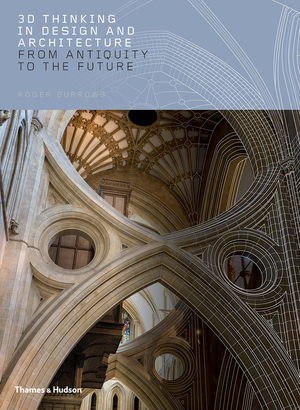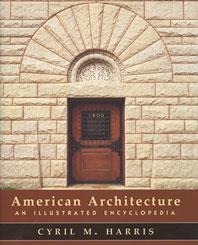Ohio’s Cuyahoga Valley was formed some two million years ago by successive glacial encroachments that subsumed the region and carved its many river valleys and the Great Lakes. The ice caps are long gone but their spirit is now front and center at the Cleveland Museum of Natural History (CMNH), in the form of a rippling glass-fiber reinforced concrete (GFRC) facade element. It is the most conspicuous element of a $150 million renovation and expansion led by the local office of DLR Group. The multiphase 375,000 square-foot project, which wrapped up construction in December 2024, also saw the gut renovation of existing gallery spaces, the construction of new exhibition halls, and rejuvenated landscaping.
.webp)
The glass curtain wall is bird-friendly and provides abundant daylight to the museum. Photo © Kevin G Reeves
Founded in 1920, the CMNH’s began in a mansion within the city’s long demolished Millionaire’s Row. In 1958, the museum decamped to its current location next to Wade Oval, a green space adjacent to the Cleveland Museum of Art and the Cleveland Botanical Garden. The brick-clad building was designed by local firm Garfield, Harris, Schafer, Flynn, and Williams, which later became Westlake, Reed, Leskosky, which was acquired by DLR Group in 2016. Those predecessor firms led the design of numerous expansions to the museum through the years, including the Nathan and Fannye Shafran Planetarium (2002). In 2019, DLR Group was, fittingly, selected to lead the museum’s Centennial Transformation Project, a sweeping overhaul of the museum. The first phase, which entailed the renovation of an auditorium and the museum’s main courtyard, was completed in 2020.
.webp)
1
.webp)
2
The visitor hall is populated with well-known items from the collection (1); the exhibition spaces have been revamped to be narrative-driven (2). Photos © Kevin G Reeves
Phase two kicked off in 2021 with the primary goal of rationalizing the museum’s many parts into a more cohesive entity. Internal circulation was an area of particular concern, with the museum’s two entrances—one located to the southeast, by Wade Oval, and the other through a parking structure to the north—flowing directly into a gallery space.
“It was a confusing setup for user experience; you weren’t really sure whether you should walk through the gallery and start your journey at the main entrance or traverse the museum through a roundabout loop,” explains DLR Group design leader and principal Mark Morris. “The primary entrance was also separated from Wade Oval by an asphalt parking lot and a sightline-obscuring hedgerow.”
.webp)
3
.webp)
4
The existing planitarium was conserved and revamped (3); different epochs and species are interwoven throughout the galleries (4.) Photos © Kevin G Reeves
The design team remedied user disorientation by transforming the sandwiched gallery space into a nearly 14,650-square-foot visitor’s hall featuring notable elements of the museum’s collection, like the affectionally nicknamed “Happy”—a 70-foot-long, 14-foot-tall Haplocanthosaurus fossil. The hall, freely open to the public to encourage community outreach, is adjoined to the 55,000-square-foot addition, which houses exhibition, research, and collections storage spaces, and a 3,000-square-foot café expansion.
Both the hall and expansion are ensconced by the newly installed, south-facing glass curtainwall, where GFRC undulates as both cornice and facade cladding. These large expanses of glazing also provide direct sightlines to Wade Oval and the abutting cultural institutions. A newly landscaped, two-acre park, sowed with native grasses and plants, further bridges the CMNH to this context. And, in a clever move, the GFRC cladding, fitted with spouts, swoops downward to irrigate the garden with rainwater—like a thawing glacial remnant. These additions—along with the use of passive shading, low-e glazing, a photovoltaic array, an energy-efficient HVAC system, and low-VOC materials, among other features—have helped CMNH achieve LEED Platinum certification.
.webp)
5
.webp)
6
The museum includes numerous gathering and community spaces (5) and the galleries have clear wayfinding (6). Photos © Kevin G Reeves
Inside, New York-based design firm G&A revamped the CMNH’s exhibition design. Working in tandem with the museum’s curatorial, collections, and educational teams, G&A developed a narrative approach that eschews traditional compartmentalization by epoch, geography, or type of species or living thing. Instead, new exhibition spaces include the 14,000 square-foot Evolving Life Wing—located within 26,000 square feet of renovated space—and the 15,000 square-foot Dynamic Earth Wing, in the addition, which takes visitors on a journey through the Big Bang and the evolution of species on Earth.
“The exhibits take a bold approach, forming integrated storylines of planetary and biological processes that make these powerful forces tangible and relevant in contemporary life,” says G&A managing director Joshua Gallagher. "All of the interactives, both physical and digital, are driven by ease of use balanced with immersive scientific information."
.webp)
The project was built around the planitarium with relandscaped grounds surrounding the main entrance. Photo © Kevin G Reeves
The CMNH celebrated the conclusion of all construction phases and its reopening in December. And with the the Centennial Transformation Project work complete, it’s hoped the institution has been successfully repositioned for its second century.
“The museum is important to a lot of locals, and there was certainly nostalgia for what it was,” notes DLR Group’s Morris. “Our office, being a fully integrated studio, worked on every facet of the project, from design services to mechanical and engineering. We transformed the museum and changed the user experience, but it remains rooted in Cleveland, and to us, that worked out perfectly.”
.jpg?1738250809)







